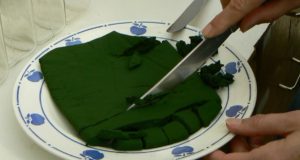
Cataracts are something that most of us will have to deal with at some time in our lives, and the only effective way to treat them is to have them removed.
The good news is that a cataract operation is one of the fastest and safest medical procedures around. However, such convenience does not mean that recovery has become simpler, with the high degree of care still required. But, when it comes to cataract surgery recovery, there are several simple things that a patient can do to help the process along. Most of them relate to resting, relaxing and generally stress free activities, with such recommendations designed to allow the intraocular lens implant to settle securely into its new surrounds, and the eye itself to heal as quickly as possible. Here are five things to keep in mind, to ensure the whole recovery process progresses as smoothly as possible. Avoid Excessive Movement It might sound strange but the idea is to sit still as much as possible to reduce the chance of the new lens being knocked out of place. While there is only a small chance of this ever happening, excessive movement like running, skipping or jumping may dislodge the new lens during the initial recovery period. Immediately after surgery, movement should be slow and gentle. Bending over is not a good idea as an increase of blood to the head can cause an increase in ocular pressure, which can be detrimental. So, stay relaxed, stay loose and stay still.
Avoid Activities Requiring Concentrated Sight It is advisable that anyone who has had a cataract removed should not drive a vehicle for at least 24 hours after the procedure. The reason for this is the strain that concentrated sight can have on the recovering eye. The replacement lens needs time to settle in and it is better to allow this to happen over a period by resting the eye than on using it. So, driving is not a good idea, nor operating equipment, nor even following anything with your eye. Looking at a computer screen for an extended period is also not recommended, though watching television at a distance from the screen is acceptable. Protect Eyes from Contaminants Since the eye is exposed to contaminants when open, the question for most people is how to protect the eyes without keeping them closed. Well, looking into a wind or breeze can mean a higher number of dust particles are blown into the eye, and at a faster velocity than usual. Therefore, avoid facing into a wind for the first week or so after the procedure. Also, take baths instead of showers as the still water in the bath means far less risk of water getting into the eyes.
When washing the face, keep the eyes shut tightly, dab it with a damp cloth, and dry the face before opening them again. It is a good idea too to resist going to the beach or areas where construction work is going on. Also, wear shades to protect from dust, grime and strong sunlight. Resist Contact This is sometimes the hardest thing to do because the recovering eye can feel uncomfortable, itchy and dry, which only creates great temptation to rub it. The problem is that this type of contact risks disturbing the eye. It is better to simply use the prescription eye drops that the surgeon recommends. This will deal with the dryness and irritation, while also keeping the eyes clean. The eye drops usually contains steroids to help speed up the recovery and rebuild the strength of the eye. Follow Advice from Your Surgeon Finally, and arguably most importantly, follow the advice that your surgeon gives. This is because your surgeon will know from experience the best steps to take to recover after a cataract operation. Having listened carefully during the consultation, they will know the specifics of your job and life and can advise on the best temporary changes to ensure the intraocular lens gets the best chance to settle in perfectly.

Source by K Dawson
 Vitamin Agent The Health & Naturalistic Source
Vitamin Agent The Health & Naturalistic Source





